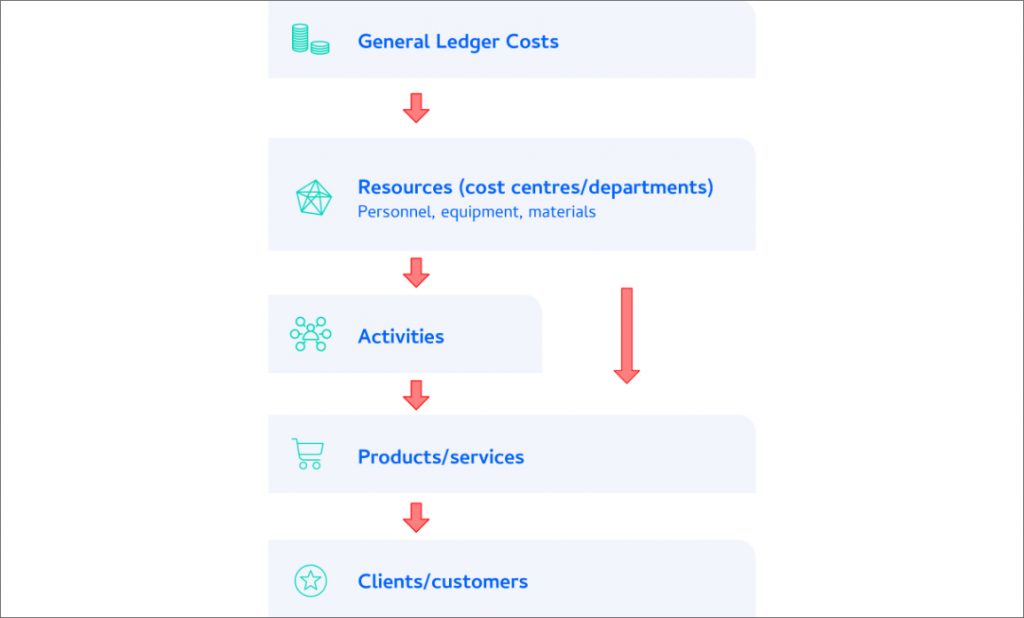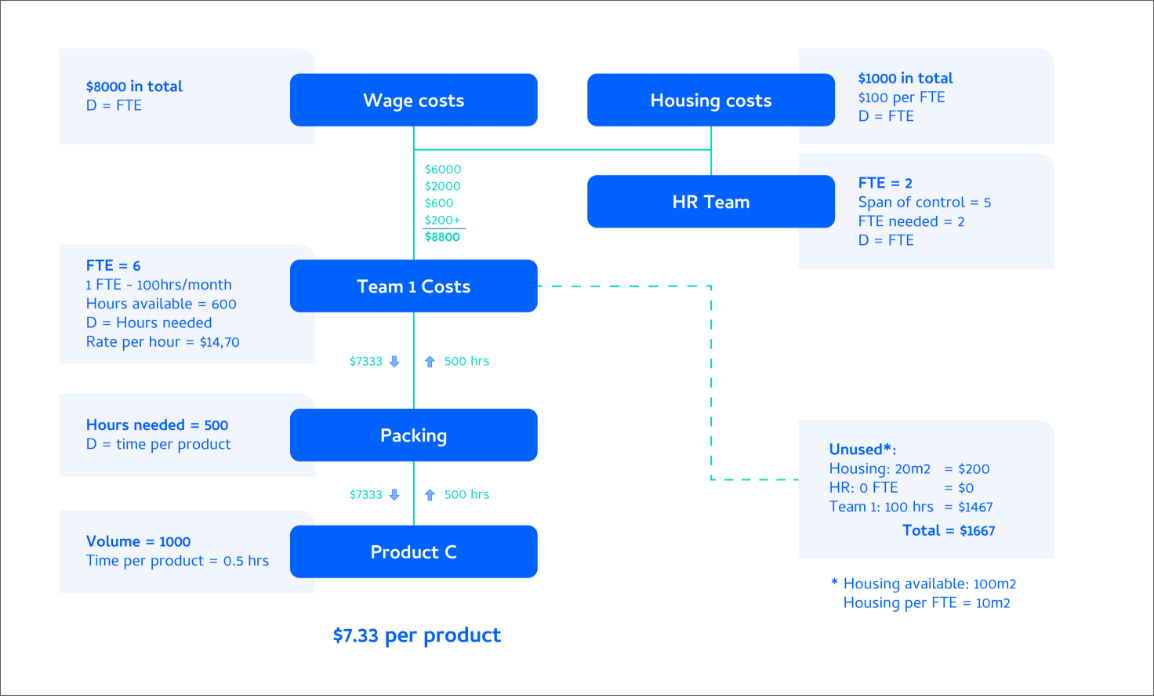Activity-Based Costing Software
What is Activity-Based Costing Software?
Activity-Based Costing (ABC) software is a type of application that helps businesses understand the true costs associated with their products and services. It does this by assigning costs to activities and then linking these activities to specific products or services. This approach provides a more accurate picture of cost allocation than traditional costing methods.
Traditional cost accounting spreads out overhead and indirect costs over product cost, based on a random and inaccurate driver such as manufacturing cost, labor hours, units sold, revenue, etc. This results in over- and under-allocation of some products and customers, which can distort the profitability of products and customers. This can lead to misinformed management, and decisions to prioritize certain products or customers can have disastrous outcomes because of it.
This is where Activity-Based Costing software comes in. Activity-Based Costing software allows a more accurate allocation of overhead and other indirect costs to products and customers, leading to more accurate cost and profitability calculations. Activity-Based Costing was introduced by Kaplan in the late 80s as a new management and cost accounting methodology, because it took away the shortcomings of existing cost accounting methodologies.
CostPerform has been at the forefront of promoting and implementing Activity-Based Costing software since the mid-90s. CostPerform embraced Kaplan’s methodology and took it to the next level by incorporating dynamic ‘pull drivers’ (cause-and-effect) and expanding the usage of Activity-Based Costing software to all costs and processes.
What does Activity-Based Costing look like?
As the name suggests, traditional Activity-Based Costing is a cost allocation method based on activities. Schematically it looks like this:

Costs are ‘pushed’ down from one layer to the next (for instance from ‘resources’ to ‘activities’) using a static cost driver (estimates or measures, such as the total time spent on an activity). It’s static because it doesn’t adapt to the volume produced.
Most important Time-driven Activity-Based Costing features

Create activity-based (indirect) cost allocations

Use CostPerform’s software to gain more and better insights

Create true cause-and-effect relationships between products and costs

Determine the next steps for your business
This is how Activity-Based Costing software works

This is what Activity-Based Costing software does
In short, Activity-Based Costing software lets you calculate the cost price of a product or service with a dynamic cost driver that adapts to the volume produced. In this case, the driver is the time needed per unit or activity. Activity-Based Costing therefore results in a more realistic cost price, and insights into the true cause-and-effect relationships between time, volume, and cost price. This allows you to better assess the effectiveness and efficiency of cost model components, discover where improvement is needed, and thus directly impact unit costs, cost prices, and profits.
As you can see in the example below, Team 1 has an unused capacity of 100 hours, costing 1467 dollars. To make the team more profitable, it looks like there are two options: lose 1 FTE or increase the production volume to 1200. With CostPerform and (Time-driven) Activity-Based Costing software, you can map out the consequences of both solutions and see which one is best for your business.

CostPerform and Activity-Based Costing software in short
Activity-Based Costing is a form of pull-cost modelling that can be implemented in your cost model as a method to calculate cost prices. Because it uses time as a dynamic cost driver, true cause-and-effect relationships between products and costs become visible, providing insights that can be used to determine the right next steps for your business.
Request a demo
Fill in the form below and we will reach out to you to plan an online demo of our cost management software.